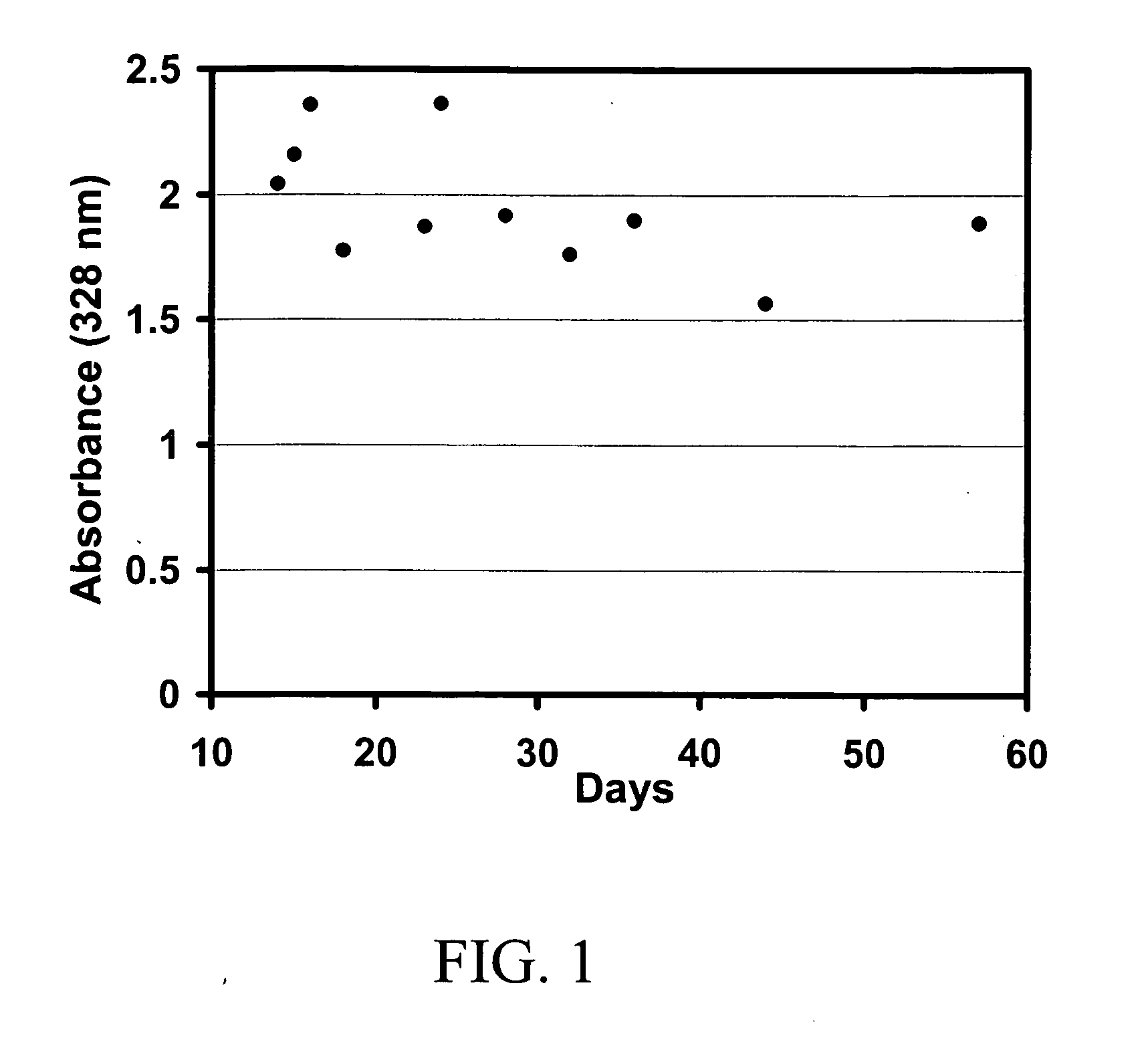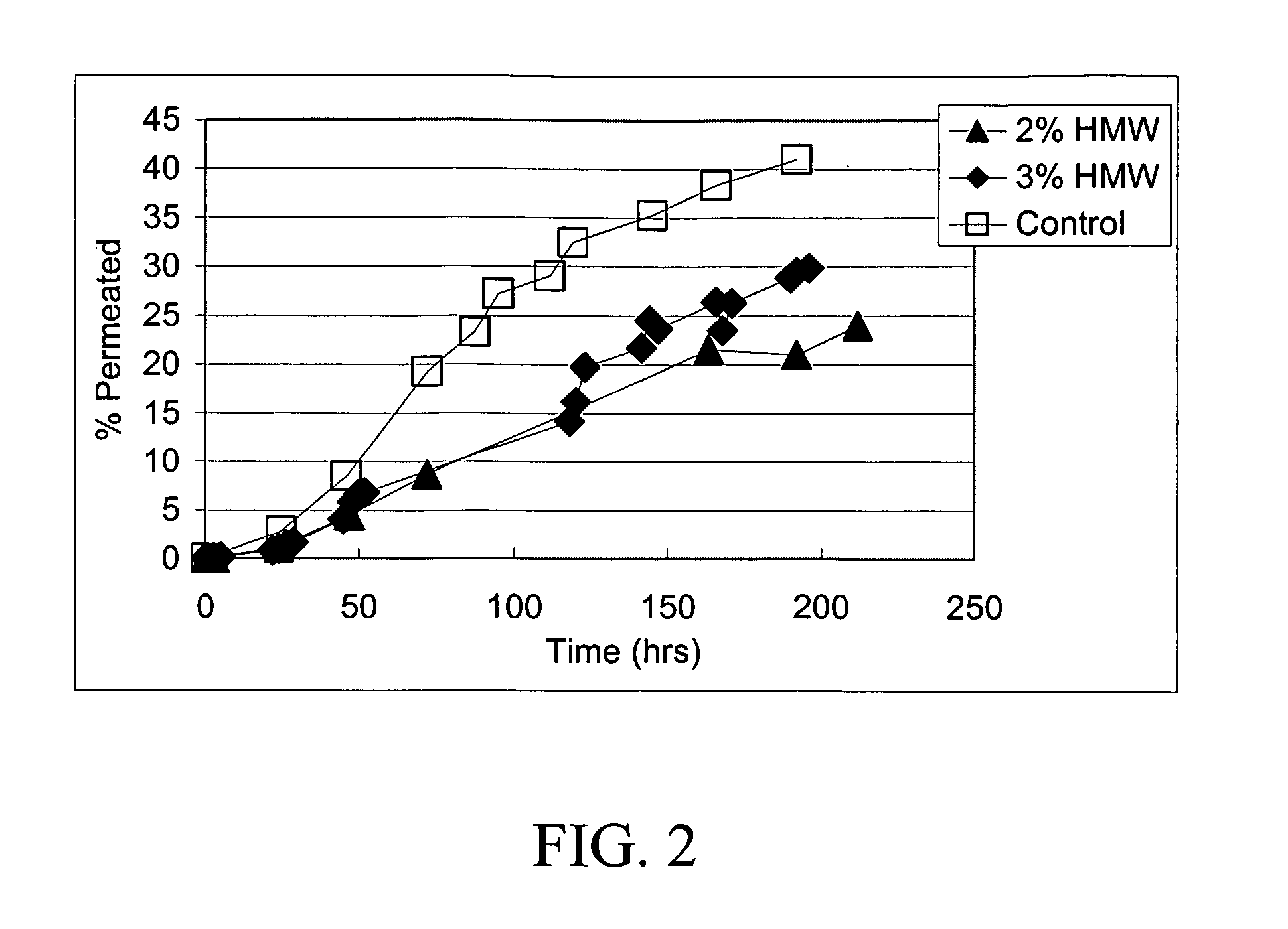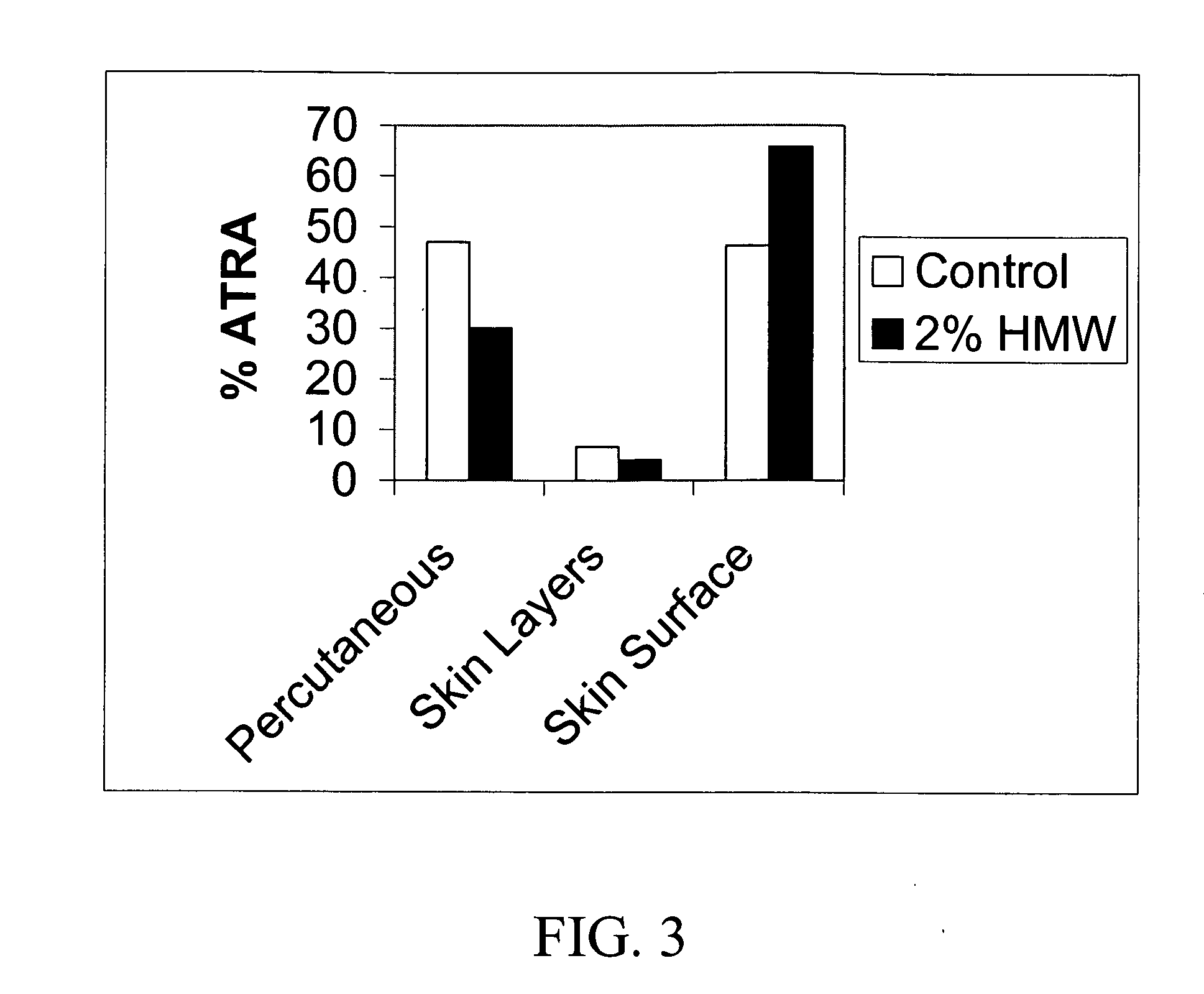Particles for the delivery of active agents
- Summary
- Abstract
- Description
- Claims
- Application Information
AI Technical Summary
Benefits of technology
Problems solved by technology
Method used
Image
Examples
example 1
Preparation of Retinoic Acid Particles
[0087] Water-insoluble all-trans retinoic acid (ATRA) in the form of solid particles (2 wt %) was incorporated into high viscosity chitosan solutions [3 wt % solutions of Protasan UP B 80 / 500 (FMC Biopolymers Inc.; 755 cps apparent viscosity) in 2.1 wt % glycolic acid and 0.03 wt % sodium hydroxide] in the presence of soybean oil (17 wt %) by vigorous mixing to form a matrix. The viscosity of the matrix was initially 215,000 cps as measured on a Brookfield LVT viscometer at 25° C. with appropriate spindle at 1.5 rpm. The emulsion was then mixed with a poly(acrylic acid) solution (0.5 wt %) at pH 6.3 and homogenized to make a gel containing retinoic acid microparticles of size below 10 microns.
example 2
Stability of Retinoic Acid Particles
[0088] The concentration of retinoic acid in the final gel formulation was measured by HPLC. Fifty microliters of the topical preparation containing retinoic acid was shaken for 20 minutes in the presence of 5 milliliters of acetonitrile then centrifuged at 4000 rpm for 5 minutes. A 20 microliter aliquot of the supernatant was then injected onto a Zorbax SB-C18 column (4.6 mm×75 mm, 3.5 micron) equipped with a Zorbax SB-C18 Guard cartridge (4.6×12.5 mm) and operated with aq. 70% acetonitrile containing 5% acetic acid and 0.02% triethanolamine as mobile phase (1 ml / min) and detection at 340 nm. The calibration was linear from 50 to 5,000 ng / ml.
[0089] The stability of the retinoic acid was determined over a 3 month period. The retinoic acid was highly stable in the chitosan microparticulates. The initial retinoic acid concentration was determined as 0.052% at time 0 and 0.05% at 3 months.
example 3
Preclinical Study Involving Gel Formulation Containing Retinoic Acid Particles
[0090] A 3-month preclinical study was undertaken in both mice and rabbits to determine the severity of skin reactions after application of the retinoic acid gel as described above using the Draize test. The animals (40 New Zealand White Rabbits and 140 CD-1 mice) were divided into 5 groups as shown in Table 1, 2 and 3.
[0091] The test compound was formulated to include a concentration of 0.05 wt % of retinoic acid in microparticulate form as illustrated in Example 1 and applied at 100 times and 500 times the human dose (Groups 3 and 4). The vehicle gel and the vehicle gel containing the chitosan microparticles without retinoic acid (Groups 1 and 2) acted as negative controls whereas a commercial 0.05% cream (Renova 0.05% retinoic acid) in a standard emulsion formula at 500 the human dose (Group 5) acted as positive control. As shown in Table 1 in the rabbit study, it was soon apparent that the positive ...
PUM
| Property | Measurement | Unit |
|---|---|---|
| Temperature | aaaaa | aaaaa |
| Time | aaaaa | aaaaa |
| Diameter | aaaaa | aaaaa |
Abstract
Description
Claims
Application Information
 Login to View More
Login to View More - R&D
- Intellectual Property
- Life Sciences
- Materials
- Tech Scout
- Unparalleled Data Quality
- Higher Quality Content
- 60% Fewer Hallucinations
Browse by: Latest US Patents, China's latest patents, Technical Efficacy Thesaurus, Application Domain, Technology Topic, Popular Technical Reports.
© 2025 PatSnap. All rights reserved.Legal|Privacy policy|Modern Slavery Act Transparency Statement|Sitemap|About US| Contact US: help@patsnap.com



